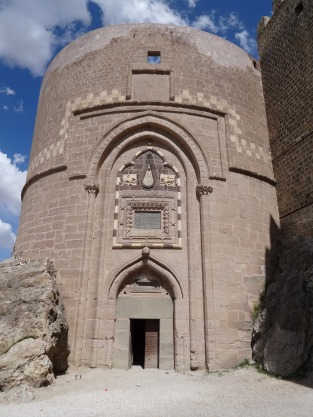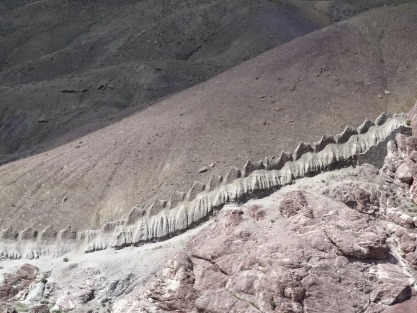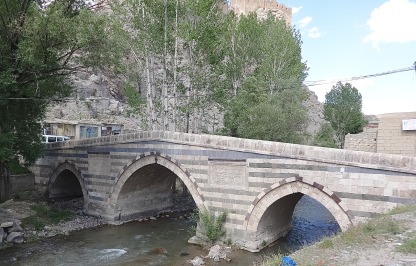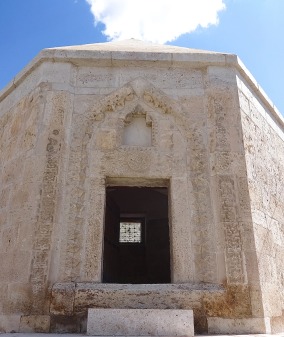Town of fresh water
Other name: Khoshab
Of all Turkey’s many dramatically located castles Hoşap Kalesi (castle, AKA Mahmudiye Kalesi or Narin Kale), southeast of Van on the road to Hakkari, must be one of the most striking. High up on a lofty rock the castle spreads itself out over a sizeable area completely dominating the dusty little settlement of Güzelsu at the foot of the rock. It was almost certainly preceded by a Urartian castle, since lost, and then by an Armenian fortress.
By Turkish standards, the castle is not particularly old, apparently having been commissioned in the 1643 by Sarı Süleyman Mahmudi, a local Kurdish chieftain of the Mahmudi tribe whose family had acquired the area from the Karakoyunlu (Black Sheep) dynasty in the late 14th century. However, mention of a Kale-i Mahmudiye by the miniaturist Matrakçı Nasuh, who transited the town on his way back from campaigning in Persia, suggests that Sarı Süleyman Mahmudi might only have renovated a pre-existing castle. In their guide to Eastern Turkey the Nişanyans suggested that the Mahmudis might originally have been Yezidis who converted to Islam as late as the 1580s. Their leaders continued to occupy the castle right into the 19th century.
Today a road runs round the back of the rock and deposits visitors in front of the magnificent main gate set into a round tower which features carvings of two lions, a Mardin-style but multi-coloured teardrop and an inscription in Persian dating the building to 1643. Unfortunate restoration work completed in 2016 has given the exterior the favoured Toytown look of contemporary castle renovators.
Unfortunate restoration work completed in 2016 has given the exterior the favoured Toytown look of contemporary castle renovators.
Inside the gate a slippery stepped tunnel ascends to the interior of the castle but there is little information inside to help you identify the various rooms and some parts remain closed to the public. In its heyday the castle is said to have boasted more than 100 rooms, as well as several hamams and the inevitable dungeon that can still be made out today.
The views from the ramparts are fantastic, especially when you look back over the rear of the village at a line of mud-brick outer defences that looks as if they might be the backbone of a stegosaurus. There are also remains of towers built onto a lost lower wall of the castle plus a restored Kale Cami (Castle Mosque).
 Other structures around the village have also been restored although without information on their dates being provided. Finest of the minor monuments is the striped, triple-arched Evliya Bey Köprüsü (Bridge) over the Hoşap stream that was erected in 1671 and now provides a picture-perfect backdrop for a small riverside tea garden. Hoşap is apparently Persian for ‘fresh water’.
Other structures around the village have also been restored although without information on their dates being provided. Finest of the minor monuments is the striped, triple-arched Evliya Bey Köprüsü (Bridge) over the Hoşap stream that was erected in 1671 and now provides a picture-perfect backdrop for a small riverside tea garden. Hoşap is apparently Persian for ‘fresh water’.
At the southern end of the village is the Mulla Ömer Cami, originally built in 1700 but destroyed in 1914 during a Russian invasion. From 1942 to 1956 the ruins served as a school house before the mosque was rebuilt in 1988. What looks like a Selçuk türbe (tomb) in the grounds is presumably much more recent than that.
Also scattered about the village are a medrese, whose similarly Selçuk-looking türbe has a fine carved entrance, and the Hasan Bey türbe and medrese at the start of the village as you come in from Van. Neither offers any information on its history. 
Sleeping
There is nowhere to stay in Hoşap. Most people visit from Van.
Transport info
Minibuses to Hoşap leave from the southern end of Cumhuriyet Caddesi in Van. Don’t leave it too late to start the return journey in case of transport hitches.
On the way to or from Hoşap you might also want to visit the Urartian ruins at Çavuştepe and/or the imposing church at Albayrak with, beyond it, the “Little Cappadocia” at Yavuzler Köyü.



